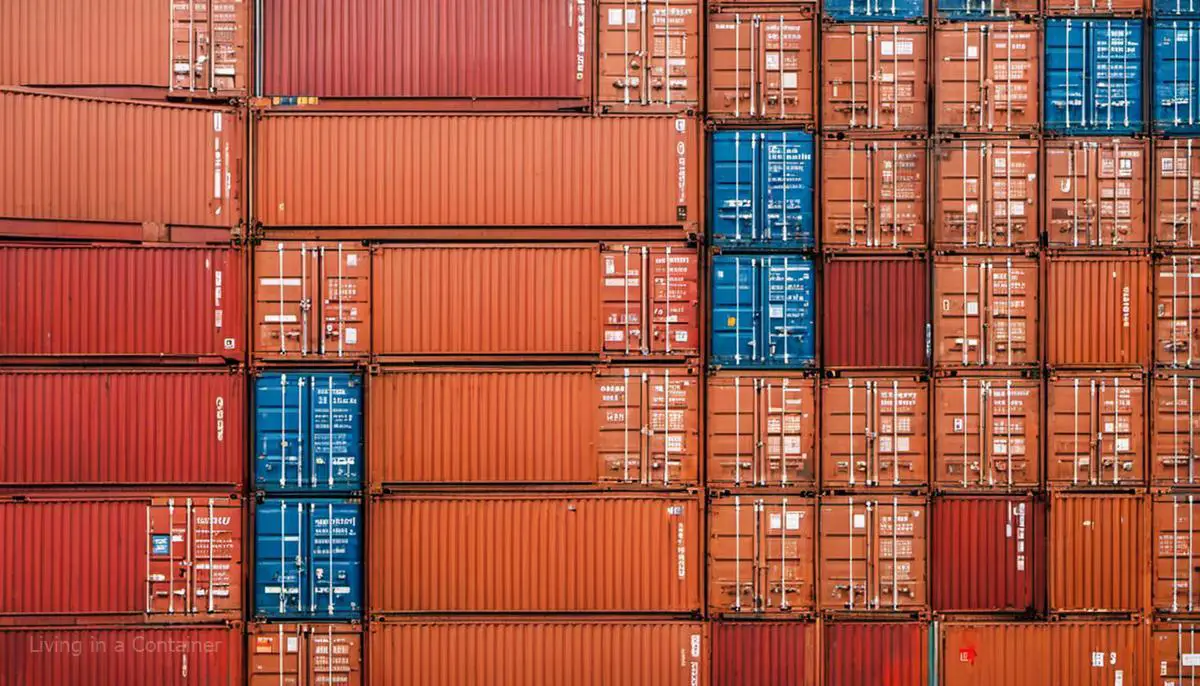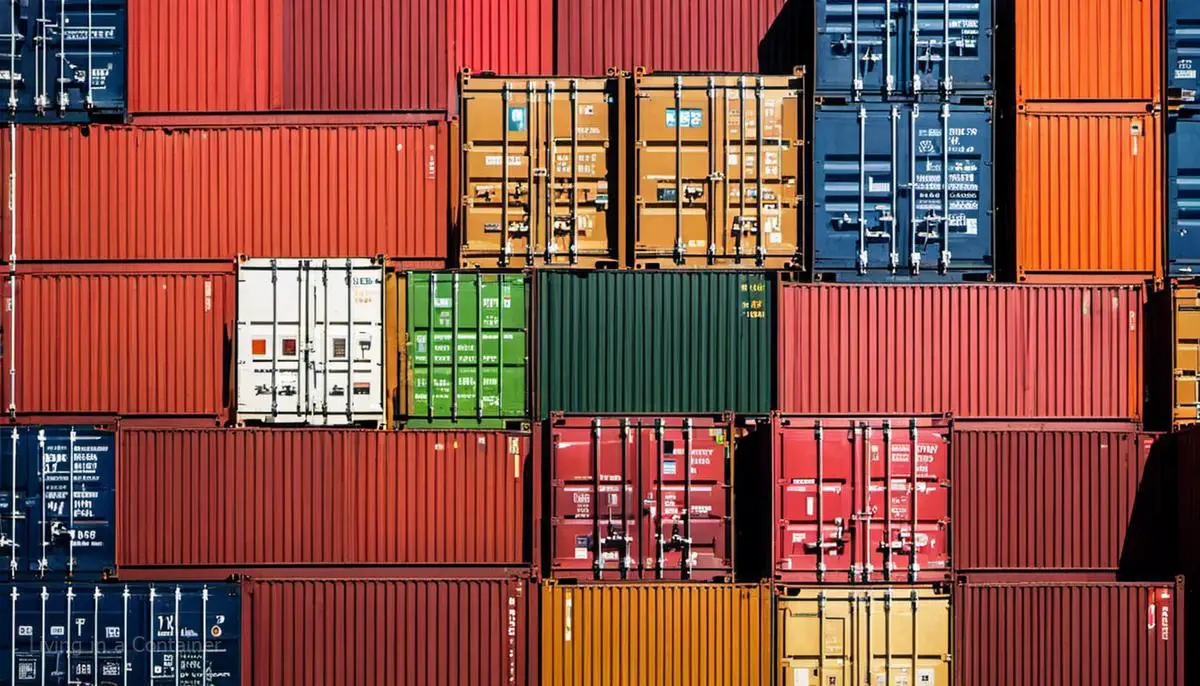As we stand on the brink of a revolution in environmental sustainably and cost-effectiveness, one driving force leads the charge – the shipping container. Broadening its scope far beyond its initial usage for transportation logistics, today, the shipping container leans into diverse domains such as real estate, hospitality, retail, and more. By incorporating an agenda of sustainability merged with a focus on economics, we plunge into an era where shipping containers seamlessly mold domestic and global markets. This journey encompasses a lens into their untapped market potential, innovations, product developments, and glimpses into a future shaped and changed by these adaptable giants.
Untapped Market Potential of Shipping Containers
Undoubtedly, tradition has been cast aside in many business sectors in the past decade, and ours is a time of accelerated innovation and disruptive change. One of the most fascinating shifts currently taking place is the transformative use of shipping containers, influencing markets and reshaping industries as we know them. Who would have thought that these giant, steel structures could revolutionize beyond their transportation purpose? Yet here we are, witnessing a seismic shift in multiple industries, from housing to retail, and hospitality to agriculture.
Let’s start off with something daringly visionary – housing.
Merely seen as a metal box a few years back, shipping containers now symbolize inventive, cost-efficient, and ecologically sound alternatives to traditional housing. These modular designs are becoming ever more popular, proving that less truly is more. Their contribution? Offering a solution to affordable housing needs, while also reducing carbon footprints. Enabled by their inherent stackability, homes, hotels, and even multi-storey buildings are springing up worldwide, challenging the norms of the construction industry.
In light of their versatility, we can’t overlook their impact on the retail landscape.
From pop-up stores to experiential showrooms, shipping containers offer business owners a cost-effective, flexible, and unique alternative to brick-and-mortar retail spaces. With ever-shifting customer expectations and the need for a more robust omnichannel experience, containers are aiding brands to reinvent and deepen their relationship with consumers.
What’s more? Imagine savoring a freshly brewed cup of coffee or an artisan pizza served up from a steel crate. Quite a gastronomic innovation, isn’t it? Shipping containers are brightening up the hospitality industry. They have become a trending architectural choice for theme-based restaurants, food parks, and coffee shops, offering customers a memorable dining experience while advancing sustainable practices.
Seemingly far from their maritime origin, shipping containers are also breaking ground in farming. In the realm of agriculture, these now serve as the foundations for concepts like vertical farming and urban agriculture. With precise environmental controls, they allow for high-yield, year-round crop production, no matter the external weather conditions. This addresses multiple market pain points such as food shortages, rising import costs, and sustainability concerns.
Furthermore, storage and office spaces derived from shipping containers are witnessing a significant rise. Both startups and established businesses now benefit from these cost-effective and modifiable spaces that accommodate needs for relocation, expansion or even disaster recovery.
As we navigate through a wave of change and uncertainty, the influence of shipping containers in molding new markets becomes apparent. They embody resilience, flexibility, and innovation – qualities quintessential for survival in today’s dynamic business landscape. So, shipping containers aren’t just metal boxes, they’re game-changers symbolizing out-of-the-box thinking. Their revolutionary use is a testament to the limitless bounds of human ingenuity; a bright beacon of transformative change in the otherwise stormy seas of market evolution.

Innovation and Product Development in the Shipping Container World
In the ever-evolving landscape of entrepreneurship, shipping containers continue to exemplify the mantra “one man’s trash is another man’s treasure”. Their versatility has paved the way for ingenious applications, far beyond the initially conceived functionalities. Moving beyond housing, retail, hospitality, farming, and storage provisions, there are numerous forefront areas where shipping containers are leaving an indelible mark.
One of the most notable arenas is the healthcare sector. Clinics and hospitals are being constructed from shipping containers, offering scalable, transportable, and cost-efficient medical facilities to underprivileged communities. They serve for mobile clinics, inoculation spaces, and isolation wards, standing at the forefront during public health crises. They fill the gap of healthcare inaccessibility, reaching far-off locations due to their ability for smooth transit, ensuring medical services breach all geographical barriers.
Shipping container conversions are integral too in the sphere of education. Classrooms, libraries, computer labs, and even entire campuses are being erected using these durable containers. Proven to offer the advantages of low construction cost, quick implementation, and radical design options, schools can easily deploy these spaces even in the most remote areas, catalyzing the drive to universalize education.
In the era of digital nomads and location-independent professionals, the concept of pop-up co-working spaces has gained immense traction. Repurposed shipping containers create a dynamic, modern workspace for businesses, startups, freelancers, and remote workers. These innovative workspaces provide not just office facilities, but also an impromptu networking platform designed for collaboration and productivity.
Performing arts and cultural platforms have embraced shipping containers for their flexible and quirky aesthetics. Theaters, music venues, art studios, and exhibition spaces leverage shipping containers for their durability, portability and adaptable nature. They offer a unique ambiance that contributes to the appeal of the artistic experience while being a testament to sustainable practices.
The gym and fitness industry is another sphere where shipping containers have interesting applications. Fitness studios, boxing gyms, yoga studios, and CrossFit centers inside these steel structures are proving to be the next big thing in the realm of personal health and fitness, making wellness spaces environmentally sound, flexible, and importantly, eye-catching.
Lastly, the advent of shipping containers in aiding disaster relief is significant. Temporary shelter homes, emergency hospitals, mobile kitchens, and sanitation units created out of these containers help provide immediate assistance to disaster-struck areas, underscoring their utility in crisis moments.
Far from their humble origins, shipping containers have metamorphosed into multi-purpose tools underpinning a variety of businesses.
Their unlikely success story underlines the power of innovation, creativity, and economic savvy in unlocking unanticipated business opportunities and addressing diverse societal needs. The only requirement? The ability to envision beyond conventional limits and the audacity to materialize these visions to life – a trait inherent to the spirit of entrepreneurship.

The Future of Shipping Container World
As we continue to delve into the potential uses of shipping containers and their impact in varying sectors, it’s crucial to probe some other magnificent opportunities, particularly in sectors such as healthcare, education, and the creative industry, just to name a few.
One of the most significant trends that we can anticipate in the shipping container industry is within the realm of healthcare. Today’s medical facilities necessitate modular and expandable solutions to cater to the ever-changing health needs. Shipping containers, with their robust and easily modifiable structure, have found a crucial role in augmenting healthcare facilities, especially in remote or crowded regions. Mobile health clinics, temporary hospitals, research labs, and isolation wards in time of pandemics are prime examples of how shipping containers are fast becoming an indispensable part of healthcare infrastructure.
In the domain of education, we can expect an increasing adoption of shipping containers as classrooms, libraries, and other educational facilities. Schools across the globe are turning to prefabricated shipping containers for their needs, particularly due to the reduced construction time and costs as well as the eco-friendly characteristics of these structures. Not to mention, the flexibility of reconfiguring and expanding as the institution grows, a luxury traditional brick-and-mortar classrooms lack.
In the self-driven professional world of today, pop-up co-working spaces created from shipping containers are a trend waiting to explode. These instant offices can be deployed anywhere, offering utmost convenience and flexibility, coupled with lower overheads for co-working firms. This low-cost, sustainable solution satisfies the rising demand for affordable, mobile, and adaptable workspaces, making it a game-changer in commercial property development.
In the sphere of performing arts and cultural platforms, shipping containers are also presenting innovative opportunities. From mobile galleries, recording studios to stage sets and pop-up event venues, these containers are transforming how we perceive and experience cultural engagements.
Another industry where shipping containers have started making waves is the fitness and gym industry. Container gyms – fitted with all equipment needed for a full-body workout – allow for instant deployment, mobility, and cost-efficient setup in areas with limited access to fitness facilities.
Lastly, society will lean heavily on the capabilities of shipping containers during disaster relief efforts. Their robust structure, quick deployment, and adaptability make shipping containers an ideal solution for emergency housing, field hospitals, and make-shift hubs for vital services.
In conclusion, the diverse opportunities and trends awaiting exploitation in the shipping container industry are numerable. With the rise of these industrial-strength giants as a multi-faceted solution, it’s safe to say that they are more than capable of disrupting industry norms and transforming the way we live, work, and respond to global crises.

As we look to the horizon, there’s no overlooking the powerful influence that shipping containers have established on our lives and industries. From unexplored niches in the market to groundbreaking sectors, a picture of a future rife with disruption and opportunities imbues our vision. Shipping containers stand poised to impact everything – our living spaces, work environments, business operations, and even the way we approach technological developments. It’s not just real estate developers or restaurateurs who stand to gain; whether it is fintech innovators or educational establishments, everyone might find these giants knocking on their doors soon, spelling a transformative shift in conventional paradigms. And in this evolving narrative, we all stand at the crossroads of a revolution – silently steered by shipping containers.
